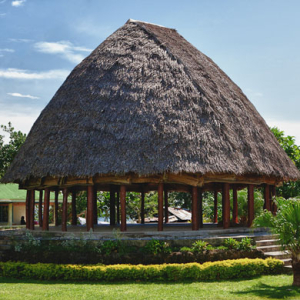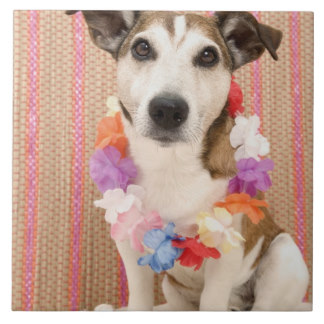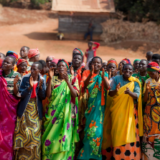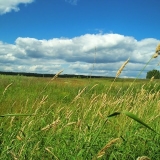As the weather is getting colder in the Northern Hemisphere, this is the right moment to share with you the warmth of the Samoan Islands – the land created as a resting place for the gods.
Celebrations in Samoa
Samoans celebrate every event in their lives with a feast, even smaller events like Sundays. This is an occasion to bring the whole family together as well as friends and neighbors. If you are a tourist, having dinner might be more like going to a show and a feast at the same time, since dance has become part of the welcoming rituals dedicated to visitors. Sasa dancers will be those telling you the story of the land. Sitting down or standing up, all as one graciously moving their hands, they will enact birds, fish, the cleaning of the house or the travel of people from one island to another.
Palolo Rise
If you are a culinary explorer, you must visit Samoa in October or November. You don’t even have to go to any fancy restaurant; a quick swim in the middle of the night will suffice, by doing so you will get surrounded by fresh food! Where does this food come from? Well, from palolo worms. At this time of the year, palolo sea worms let go of the end part of their bodies. These little segments containing eggs spiral to the surface of the ocean, where they are easily collected by locals.
The event is known as The Palolo Rise and is enthusiastically expected, palolo being considered a delicacy. If you are not ready for Samoan raw food, you could still try the palolo loaves, cooked with coconut milk and onions. After all, they are not so different from fish eggs.
The Family Dome
On some beaches you will be able to see traditional houses called “fale”. According to local legends, the special, rounded shape of the house was established by Tagaloalagi, the creator of Samoa. It was meant to resemble the heavenly dome.
Under this protecting, opened dome, the whole family used to sleep. As many as 20 people would share the same space. Even though individual households are the rule today, family is still very important in the Samoan society.
Names and Family Ties
If you spend some time amongst locals, you will find out that Samoans have more than one “father”. No, Samoan women don’t marry more than one man – polyandry is not practiced here! Samoans use the same word for their father and uncles (tamā), respectively for their mother and aunts (tinā). The system shows strong connections between all family members. Family ties create a thick web of support, as well as responsibility.
Honoring their strong family connections, Samoans name their children after their relatives. For example, one local woman, Teulia has three children: Selega – named after her “brother in law”, Lui named after her “uncle” and Siva named after her eldest brother.
But not only boys get their older relative’s name! If a baby girl has a tinā (aunt) born in the 90’s, there is a chance for her to be named Dodiana. Can you guess the origin of this name? Well yes, it is a combination of Dodi and Diana. The news of Dodi Fayed and Princess Diana‘s death spread worldwide and this name was created to commemorate the tragic end of the couple.
Name Origin Variation
Today almost all Samoans are Christians. This is why biblical names or names with a religious meaning like Toefuata’igaoletalalelei (“restoration of the Gospel”) are present on the islands along with Samoan Traditional names.
Other names simply represent characteristics: Malosi (strong), Umi (tall), Vave (fast) – just the right names for rugby players as this is a popular sport in Samoa alongside cricket.
There are also some names which might surprise you. For example, Isu (nose), Tala (dollar), Faiaivale (foolish) and let’s not forget Pua’a’elo (stinking pig) – the name of a Samoan high chief.
Maile is a sweet sounding name, isn’t it? In Hawaiian it stands for a vine used in making leis, but in Samoan it is the word for “dog”. Maile is also the name of a matai (local community leader).
The meaning of a name comes from a whole cultural context and, as society is changing, the names mentioned above start to seem unusual even for some Samoans.
Heading Back Home
The final artistic moment in wedding ceremonies and other public events is usually a dance called Taualuga. Traditionally, it was performed by the virgin daughter of a chief, but today such restrictions aren’t in place anymore.
A Taualuga dancer has to show grace and control at the same time; a worthy name for her would be Leilani (“heavenly flower”).
Before running to catch the plane in Apia (the capital city), don’t forget to say “tofa” (farewell) and “faafetai” (thank you) to Leilani and all your kind hosts!
Photo Sources:
- Samoan fale: http://www.motivation.org.au/samoa-project-update/
- Dog with lei: http://rlv.zcache.com/dog_with_lei_large_square_…_agtbm_8byvr_324.jpg
- Samoan woman performing traditional dance: http://polynesians.tumblr.com/post/85438971979











